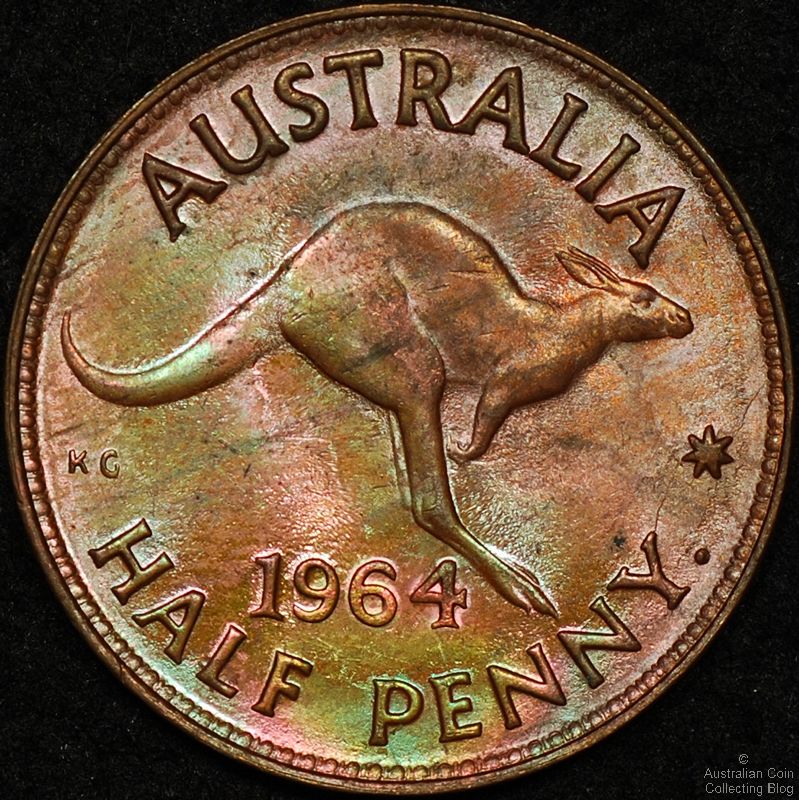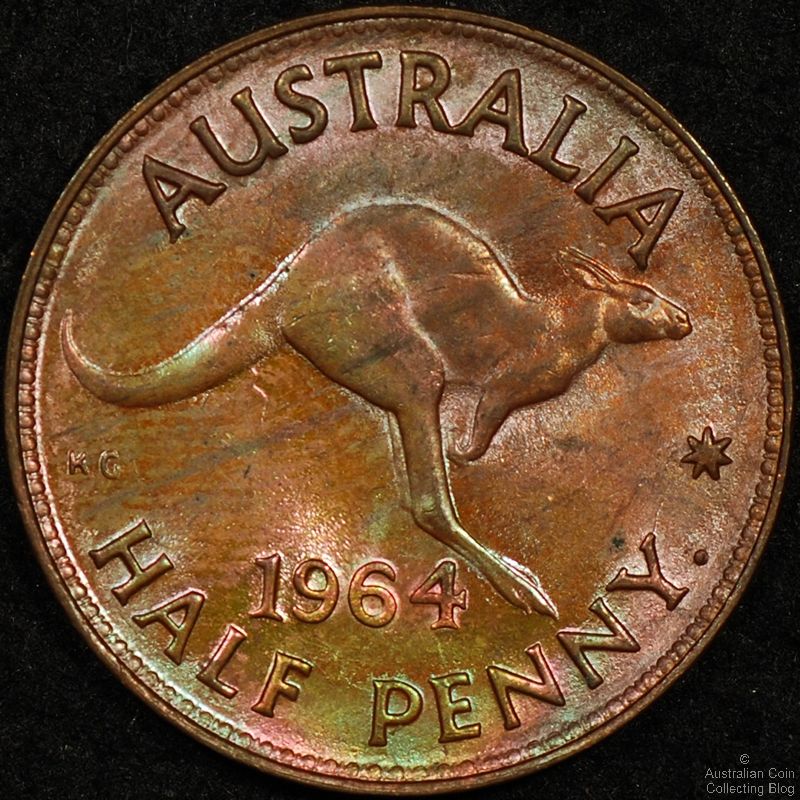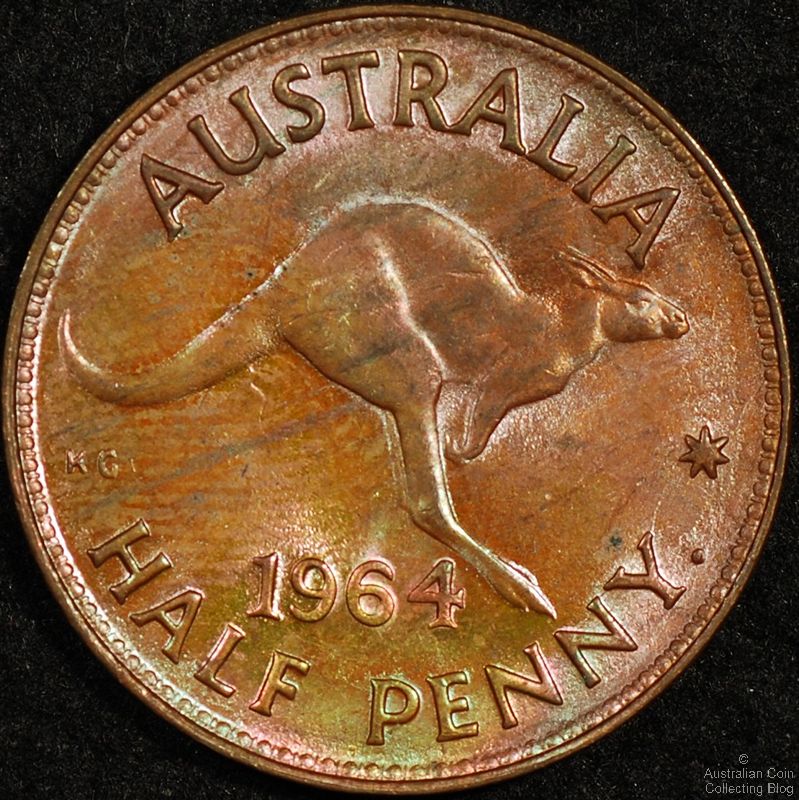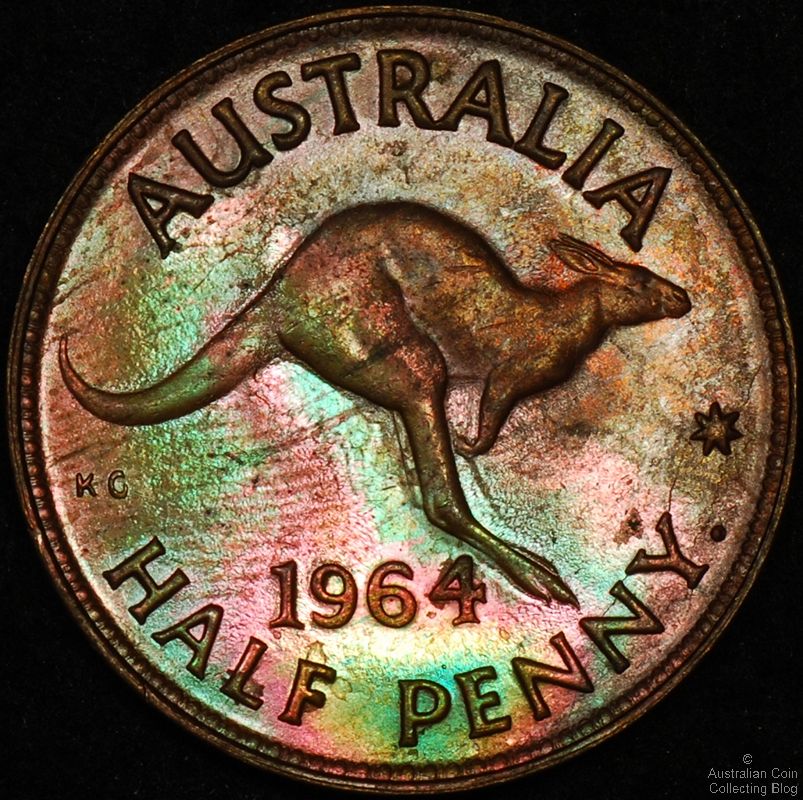A question came up recently on an Australian Coin Forum about how best to capture the colour of toned bronze coins. It's an interesting question so we decided to investigate four different methods of photographing the same coin in an effort to faithfully reproduce the toning. On our photo setup the end of the lens is 35cm away from the coin. The closest together we can get our two lights is 6cm from the centreline of the lens. So we tested this case, and two others with the lights 12cm and 18cm off of the lens centreline. As a final case we also tested putting the lights back to their normal 6cm position and tilted the coin toward the lens to reflect the light from the coin surface back into the lens directly.
Case 1 - Lights 6cm off of centreline
This corresponds to a light angle of about 10 degrees off of ideal normal angle. We know it's counter-intuitive but for the best lighting and images you want the camera and lights some distance away from the coins so that the angles are minimised. Camera Settings f10 1/250s. Here's the image at this angle:

Case 2 - Lights 12cm off of centreline
This corresponds to a light angle of 19 degrees. Camera settings f10 1/200s.

Case 3 - Lights 18cm off of centreline
This corresponds to a light angle of 27 degrees. Camera settings f10, 1/160s.

Case 4 - Lights 6cm off of centreline, tilted coin
This case illustrates one real advantage of having the camera and lights a long distance away from the coin. When you till the coin you don't actually need to tilt it very much (only 10 degrees in this case). So the coin appears largely round. It still requires adjustment of the f stop of the camera to keep the whole coin in focus though. Camera settings f16, 1/320s.

Conclusion
To see as much colour as possible the light onto a coin should ideally be reflected directly into the lens of the camera. This means either getting the lights as close to normal to the plane of the coin as possible or tilting the coin to reflect the light. Clearly tilting the coin is not ideal because of the inevitable distortion of the shape of the coin, and the larger focal plane required of the camera (and corresponding increase in exposure time).
When the light is reflected directly into the lens of the camera colour is maximised but the effect of any lustre is lost. In our experience any visible cleaning or hair lines can also be concealed using this lighting technique.
The best images are a compromise between the two extremes. We believe that Case 1 has the best images for both indication of coin grade and colour.
Posted by mnemtsas at March 11, 2013 7:30 PM
Subscribe to our Newsletter


